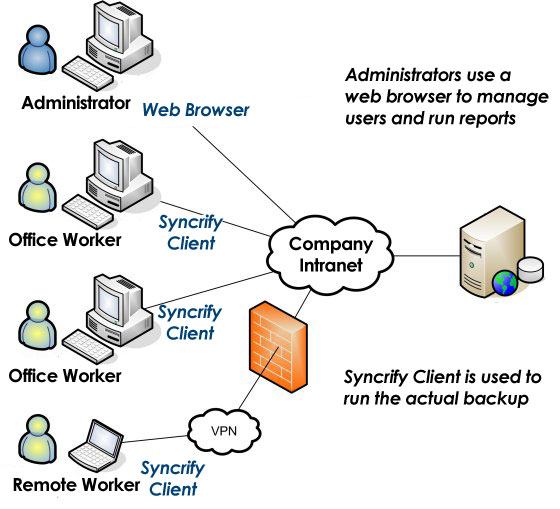Synametrics Technologies
Revolving around the core of technology
Syncrify » Administrator's Guide
Important Concepts
This section talks about some important concepts that administrators should understand when using Syncrify.
Syncrify Client and Server
Syncrify is based on a client/server model. This means you install the server on any machine that you designate to hold your backed up data and install the client on the machines that you want to backup. Typically, you would install one server and multiple clients. We recommend you install the Syncrify server on a machine that does not have any other web server running on it. This way you can have Syncrify listen on port 80, which is the default port for HTTP.
The following image shows a visual representation of the roles played by client and server.

Two types of clients connect to the Syncrify server:
- Syncrify Client
- A web-browser
In fact, you will be using both Syncrify client as well as a browser to connect to the server. While Syncrify Client is used to run the actual backups, a browser is used to view files that reside on the server as well as to administer the server
Web Interface
Every administrative task on the Syncrify Server is performed by a web browser. To connect, simply type the URL in address bar. For example:http://backup.yourCompany.com, OR http://backup.yourCompany.com:5800
The first example assumes Syncrify is running on port 80, which is the default for HTTP and the second example assumes it is running on port 5800
Both administrators and regular users can connect to Syncrify using a web browser.
Admin user
"Admin" is a special user in Syncrify. When someone connects as admin, he or she can perform administrative tasks on Syncrify Server. This user is automatically created when you install Syncrify.Regular non-admin users
Aside from "admin", every other user is considered a non-admin user. An email address is used as the login ID for non-admin users. When someone connects as a non-admin user, he/she can view their files on the server. They can even download selective files from the server to any machine.
